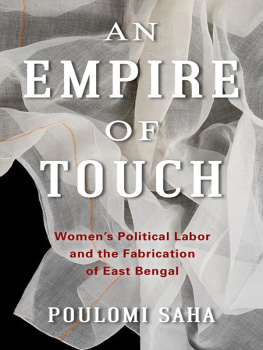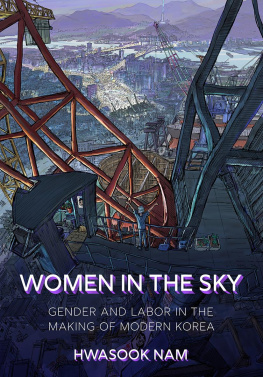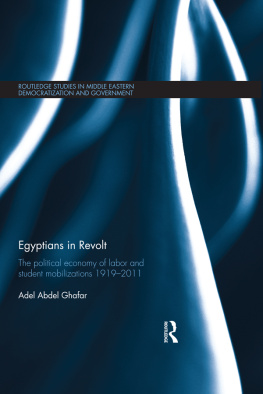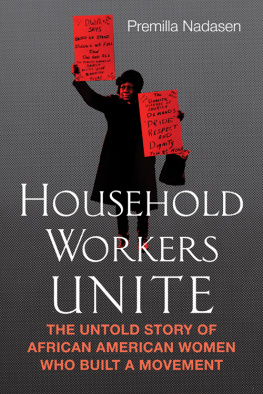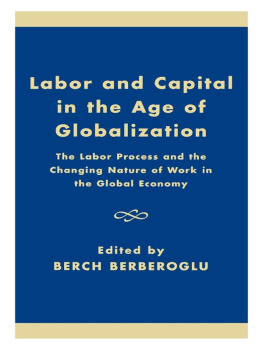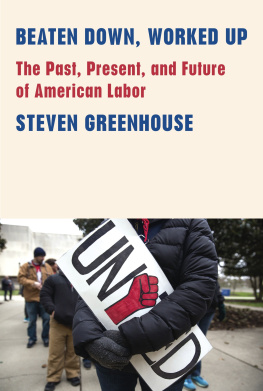Table of Contents
An
Empire
of Touch
GENDER AND CULTURE
GENDER AND CULTURE
A Series of Columbia University Press
Nancy K. Miller and Victoria Rosner, Series Editors
Carolyn G. Heilbrun (19262003) and Nancy K. Miller, Founding Editors
For a list of titles, see .
An
Empire
of Touch
Womens Political Labor and the Fabrication of East Bengal
POULOMI SAHA
Columbia University Press
New York
Columbia University Press wishes to express its appreciation for assistance given by the American Comparative Literature Associations Helen Tartar First Book Subvention Prize and the UC Berkeley English Department in the publication of this book.
Columbia University Press
Publishers Since 1893
New York Chichester, West Sussex
cup.columbia.edu
Copyright 2019 Poulomi Saha
All rights reserved
E-ISBN 978-0-231-54964-6
Library of Congress Cataloging-in-Publication Data
Names: Saha, Poulomi, author.
Title: An empire of touch: womens political labor and the fabrication of East Bengal / Poulomi Saha.
Description: New York: Columbia University Press, [2019] | Series: Gender and culture | Includes bibliographical references and index.
Identifiers: LCCN 2018042035| ISBN 9780231192088 (cloth: alk. paper) | ISBN 9780231549646 (e-book)
Subjects: LCSH: Women in developmentIndiaBengalHistory. | WomenPolitical activityIndiaBengalHistory. | Women textile workersIndiaBengalHistory. | Nation-buildingIndiaBengal. | Bengal (India)Politics and government. | Bengal (India)History.
Classification: LCC HQ1240.5.I4 S24 2019 | DDC 305.420954/14dc23
LC record available at https://lccn.loc.gov/2018042035
A Columbia University Press E-book.
CUP would be pleased to hear about your reading experience with this e-book at .
Cover design: Noah Arlow
Cover image: Victoria and Albert Museum, London
For Dorothy McCulloch and Aagami Mohiraaj
Dorian Gray wore those gauzes from Dacca
known as woven air, running water, evening
dew, that transparent cotton a dead art
now, dead for over a hundred years,
No one can imagine, my grandmother says,
what it was to wear, just to touch, that cloth.
Agha Shahid Ali, Reading Dorian Gray in Kashmir (1983 draft of Dacca Gauzes)
Contents
A cknowledgment is such a thin word for the texture of generosity, care, and love to which I am beholden and because of which this book is possible. An Empire of Touch bears vividly the touch of so many people, as do I. Writing this book for the last seven years has taken me from Providence to New Delhi to Dhaka to Berkeleywith various detours in Carlisle, Calcutta, El Cerrito, and Barringtonin an at-times dizzying circuit, over and over. Miraculously, it has also found me home in all of those places. For the host of social relations and objects that have made that possible, I am deeply grateful.
My thanks to Wendy Lochner at Columbia University Press for her commitment to seeing this book through to the very end. Lowell Frye and Kat Jorge at CUP ushered this book through production; I thank also the CUP design team for the beautiful cover and Ben Kolstad for overseeing the copyediting. I am honored and grateful that Nancy K. Miller and Victoria Rosner chose it for their Gender and Culture series, which has included some of the books that have most shaped my thinking. Thanks to the anonymous readers who offered me such excellent and detailed feedback on the manuscript; this book is better for their insight. I thank the generous support of the Hellman Family Foundation. This books final form is owed enormously to the research time and support that made it possible. The American Comparative Literature Associations Helen Tartar First Book Subvention Prize critically made possible the production of this manuscript. Research for this book was also supported by the Pembroke Center for Research and Teaching on Women at Brown University, the Foreign Language and Area Studies Fellowship, and the UC-Berkeley Humanities Research Fund. The Institute for International Studies sponsored the workshop for the manuscript at a critical juncture. It was so heartening to have this project recognized and supported by the Mount Holyoke College Alumnae Associations 1905 and Hannuum-Warner Fellowships as my time there as an undergraduate formed the base of my scholarly life. It was there that I was lucky enough long ago to start learning from Amy Martin how to read in ways that spectrally limn this book. Her friendship and love these many years are a great gift.
While a graduate student at the University of Pennsylvania, I had the good fortune to be a part of an intellectual community of faculty and students whose influence on my thinking I discover in new ways daily. I thank Ania Loomba, Suvir Kaul, and David Eng for their time, support, and generosity in advising the dissertation that set the stage for questions I was able to ask when I began this book. Also at Penn, I am grateful to Srilata Banerjee, Nancy Bentley, Jim English, Jed Esty, Amy Kaplan, David Kazanjian, Heather Love, Jo Park, Jean-Michel Rabat, and Paul Saint-Amour. Although I never had the chance to take a class with him, Peter Stallybrasss remarkably humane and textured understanding of the social life of objects has been a guidepost. One of the deepest joys of Penn was the phalanx of fellow grad students with whom I got to think, commiserate, and celebrate: GerShun Avilez, Paige Contreras-Gould, Stephanie Elsky, James Fiumara, David Gardner, Isabel Geathers, Matt Goldmark, Chris Hunter, Jillian Ingold, Jen Jahner, Adrian Khactu, Jeehyun Lim, Sarah Mantilla, Will Nessly, Emily Ogden, Michelle Strizever, Mecca Sullivan, Thomas Ward, and Emily Weissbourd. Christen Muchers been on this road with me since South Hadley and is still my favorite raised eyebrow in a room. My writing group produced a world of engagement and solidarity that made writing a dissertation live and communitarian work. Thank you, then especially, to Julia Bloch, Megan Cook, Sarah Dowling, Emily Hyde, Greta LaFleur, Melanie Micir, Jessica Rosenberg, and Emma Stapley.
The first glimmers of this project emerged at Brown University, during a year at the Pembroke Center. I thank in particular Cal Biruk, Michelle Cho, Denise Davis, Joe Fischel, Donna Goodnow, Hunter Hargraves, Martha and Artemis A. W. Joukowsky, Lynne Joyrich, Suzanne Stewart-Steinberg, Elizabeth Weed, and Debbie Weinstein. At Dickinson College, my gratitude to David Ball, Sarah Kersh, Patricia Moonsammy, Sarah Niebler, Ash Nichols, Sharon OBrien, Susan Perabo, Siobhan Phillips, Jerry Philogene, Tom Reed, Claire Seiler, Jacob Sider Jost, Dean Neil Weissman, and particularly Kelly Winters-Fazio. I learned a great deal from my studentsespecially Alejandro Herediaand colleagues during my time there. The friendships of Jenny Kelly, Marisol LeBron, Crystal Moten, and Martha Schoolman were the happiest surprise of Carlisle. I will meet them at any Chilis any time they want.
This book came to life at Berkeley. The support, remarkably rigorous and enthusiastic engagement, and sheer good cheer of colleagues have made this book thicker than I could have anticipated and the labor of its making far more fun, too. Elizabeth Abel, Janaki Bakhle, Dan Blanton, Mitch Breitweisser, Lawrence Cohen, Kathleen Donegan, Catherine Flynn, Joshua Gang, Mark Goble, Amanda Jo Goldstein, Kevis Goodman, Joshua Guzman, Dori Hale, Grace Lavery, Abdul JanMohammed, Bob Kaufman, Steven Lee, David Marno, Barbara Metcalf, Maura Nolan, Sam Otter, Genaro Padilla, Christine Philliou, Sonia Katyal, Kent Puckett, Leigh Raiford, Harsha Ram, Juana Maria Rodriguez, Scott Saul, Elena Schneider, Sue Schweik, Namwali Serpell, Katie Snyder, Hertha Sweet Wong, Elisa Tamarkin, Leti Volpp, and Bryan Wagner all read, grappled with, and hashed out thoughts and chapters in various forms, much to the benefit of this whole book. Steve Justices generosity saved the day. I thank Malcolm Potts for taking the time to share with me his experiences in Bangladesh and for opening up new avenues of research that the archive might have foreclosed. Stephen Best, Nadia Ellis, and Steven Goldsmiths extensive feedback on the manuscript at my mid-career was a light that went off, illuminating the arc of the project and dark corners I had been too hesitant to venture into on my own. Individually and collectively, their engagement with the manuscript was essential to honing its final form. I especially thank Stephen Best for helping to me to get to Berkeley in the first place. Eric Falci, Lyn Heijinian, and Emily Thornbury prove that intellectual life is an endeavor best shared with laughter and forged over many a drink. Donna Jones has been a cheerful champion of my work since I arrived at Berkeley and instrumental to securing many a necessary resource. Colleen Lye has helped shepherd this project and me through varied uncertainties and enjoining a kind of rigor and precision that raised the stakes of the workall with unstinting fortitude and determination. Judith Butler and Wendy Brown have believed in me, inexplicably, all along. Raka Ray is my model for an ethical, fun, committed feminist life in the academy. Sanchita Saxena and Puneeta Kala have made a sweet spot of respite and care in the center of campus. The sudden and delightful fact of Natalia Brizuelas friendship has brought so many things together and been the source of such fun. I am so glad to walk alongside Abhishek Kaicker, Damon Young, and Dora Zhang, leaving no man behind.

